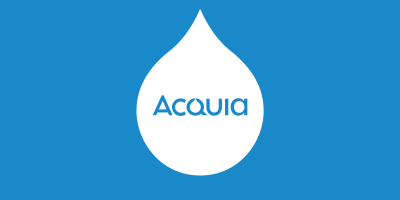What Are the Benefits of a Headless CMS?

Collection :
The popularity of headless content management systems is exploding. By 2027, the market for headless content management system (CMS) solutions is projected to balloon to $1.6 billion, up from $322 million in 2020. That’s a nearly 400% increase. Why the jump?
There are a number of reasons why businesses are flocking to headless CMS solutions. In today’s digital world, consumers expect easy, personalized experiences across a variety of devices and interfaces, but increasingly, the web- and mobile-centric focus of traditional CMSs and their unified architecture just don’t cut it. To build effective digital experiences and maintain customer loyalty, businesses need a flexible, scalable system that can deliver content to a variety of channels and adapt to ever-changing technology. A headless CMS does exactly that — and much more. In this guide, we’ll explore the key benefits of using a headless CMS and take a closer look at why this technology is all the rage in the enterprise.
Why should I use a headless CMS?
A headless CMS is a content management system that can publish content to multiple channels and devices via API endpoints. Unlike traditional CMSs, the front end that renders content is decoupled from the back end where content is created, managed, and stored.
Who is a headless CMS for? Easy — organizations that are looking to deploy content across diverse digital channels to meet their business needs. Perhaps the developers who build sites and experiences atop the system have expressed frustration at the limitations they face, or maybe the users who populate the system with content on the back end have outgrown the publishing tools and want to do more across content channels.
As we’ll explore in more detail, omnichannel publishing and building richer interactive digital experiences in the frontend are common reasons for using a headless CMS. If those rank high on your organization’s wish list for a CMS, you’re on the right track.
For front-end developers, the flexibility and freedom to build rich, engaging experiences with raw structured data can be a huge selling point. More specifically, dev teams looking to build sites and apps using popular front-end JavaScript frameworks like AngularJS, React, or VuJS will find the headless architecture to be especially accommodating.
Benefits of a headless CMS
Improved omnichannel experience
Omnichannel publishing is easily one of the biggest benefits of using a headless CMS. Instead of a back-end publishing platform that’s tightly coupled with a single front-end presentation layer, a headless system sidesteps the front end and uses APIs to publish content pretty much anywhere.
With traditional or legacy CMSs, most sites and digital experiences are crafted for the desktop web first and often reformatted for mobile devices like smartphones and tablets. Today, consumers encounter a variety of interfaces throughout their day, including not just mobile devices and laptops, but IoT smart devices, voice control UIs, and digital signage. A headless CMS makes it much easier to push content to each platform, saving content authors from having to manually reformat everything for different interfaces or duplicating their work by republishing content in multiple places.
Wider audience reach
Because headless CMSs are built to deliver content more seamlessly across many devices and platforms, they reach a wider audience. This can be a huge competitive advantage in today’s multi-device world, because organizations can more easily meet consumers where they are and engage with them on their own terms.
Ease-of-use for developers
Developers are particularly fond of the headless approach. That’s due to the freedom and flexibility they have to use whatever front-end coding frameworks and technologies they prefer rather than being stuck with a front-end architecture that’s tightly tied to the back end. Frameworks like VueJS, React, Svelte, Angular, and Next.JS are just a few of the popular frameworks that can be used with a headless CMS, but when it comes to building out the front-end experiences — and continuing to iterate and innovate as technologies evolve — the possibilities are virtually limitless.
Headless CMS solutions are also pretty developer-savvy in general, with underlying technology that’s agile and easy to learn, APIs that make managing and publishing content a breeze, support for numerous integrations and webhooks, and cutting edge tools that lift the burden for those tasked with building digital experiences on top of these systems.
Highly scalable
Because headless CMSs necessarily have a decoupled architecture, they are much more likely to be scalable. A common example would be JAMstack architectures. (“JAM” stands for JavaScript, API, and markup.) Besides being decoupled, such architectures feature a front end that’s wholly pre-built with highly optimized static pages and assets that can be served directly from a content delivery network (CDN). The costs, complexity, and risk that dynamic servers acting as critical infrastructure are thus reduced.
In addition, because the markup and other user interface assets are served directly from a CDN, JAMstack sites can be delivered quickly and securely. This ability to handle big data and to quickly deliver web pages greatly increases the scalability of a headless CMS.
Future-ready capabilities
Because of their front-end agnostic nature — and the technological freedom that trait inherently provides developers — headless CMS solutions are more future-ready than traditional systems. Because the back end is decoupled from the front end, developers can use the latest and greatest coding frameworks and technologies without having to worry about them integrating with the back end or waiting on back-end system updates. This makes it much easier for developers to iterate and innovate on the front end, so updates and digital experiences take advantage of the most recent standards and technologies.
The open standards of headless also improve interoperability between systems. Developers can integrate headless CMSs as easily as they can other services and products. So, for example, the headless version of the Acquia CMS supports both JSON:API and Open API, which have open source developer libraries, but can also integrate with tools like retool.com.
This future-facing adaptability is one of the main reasons headless CMSs are growing in popularity.
Accelerate time to future markets
If there are any sure bets in tech, one is that technology changes over time, and there will be more changes ahead. A headless CMS prepares you for both. Its agnosticism makes it easier to integrate irrespective of what the emerging technology will be. As an omnichannel source, it’s also ready to adopt future channels, so a headless CMS can help you accelerate time to market, making it more cost effective to experiment with or adopt new tech.
Getting started with a headless CMS today
For the greatest flexibility and agility, a headless CMS is the way to go, but it really depends on an organization’s needs and resources. If there’s a need for truly omnichannel digital content distribution — and these days, there almost always is — an API-first, headless CMS architecture makes for a powerful back-end repository that can support an omnichannel customer journey.
Learn more about Drupal, one of the best headless content management systems available today, by downloading our free e-book, Headless and Hybrid Drupal 101.



